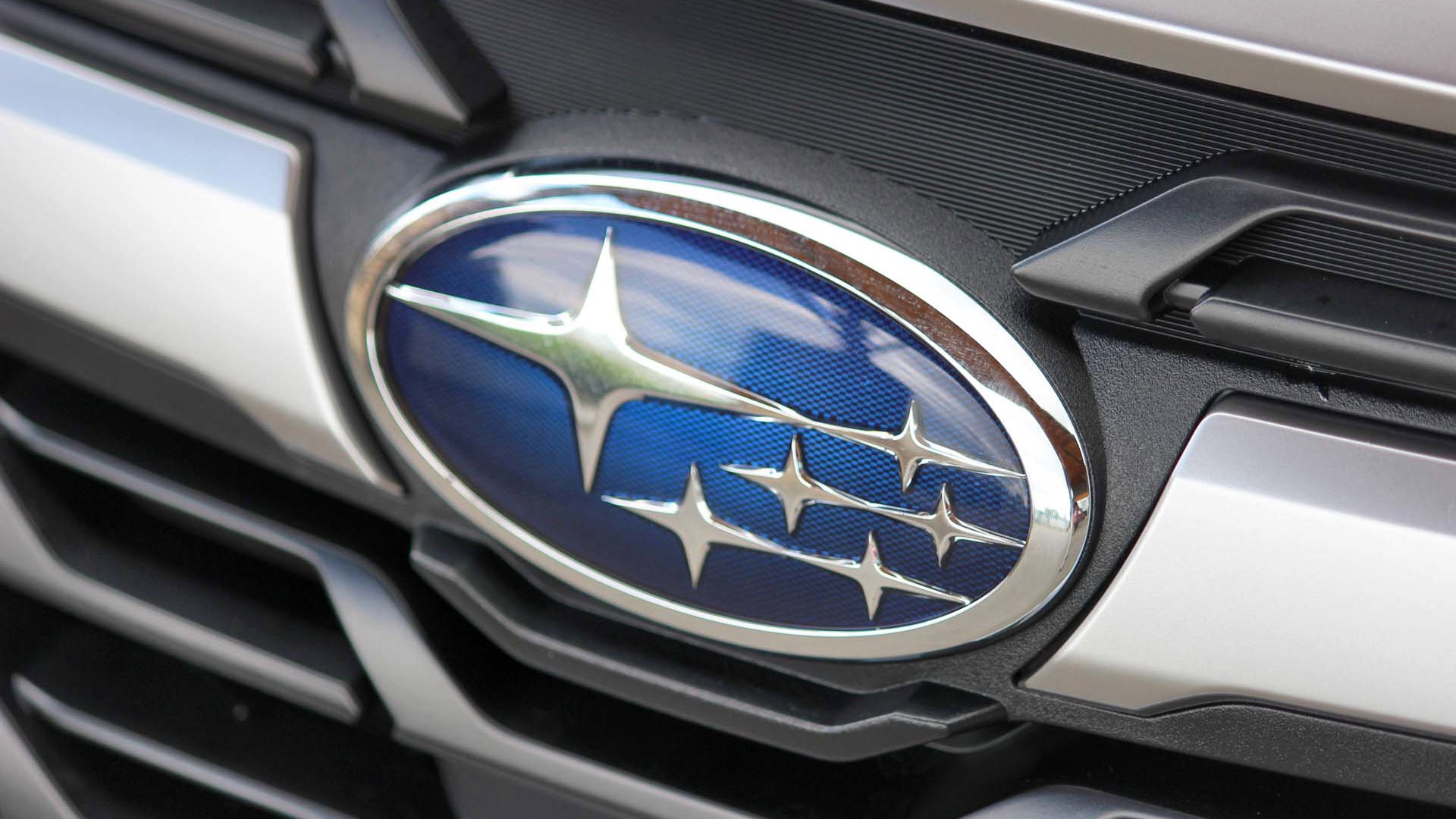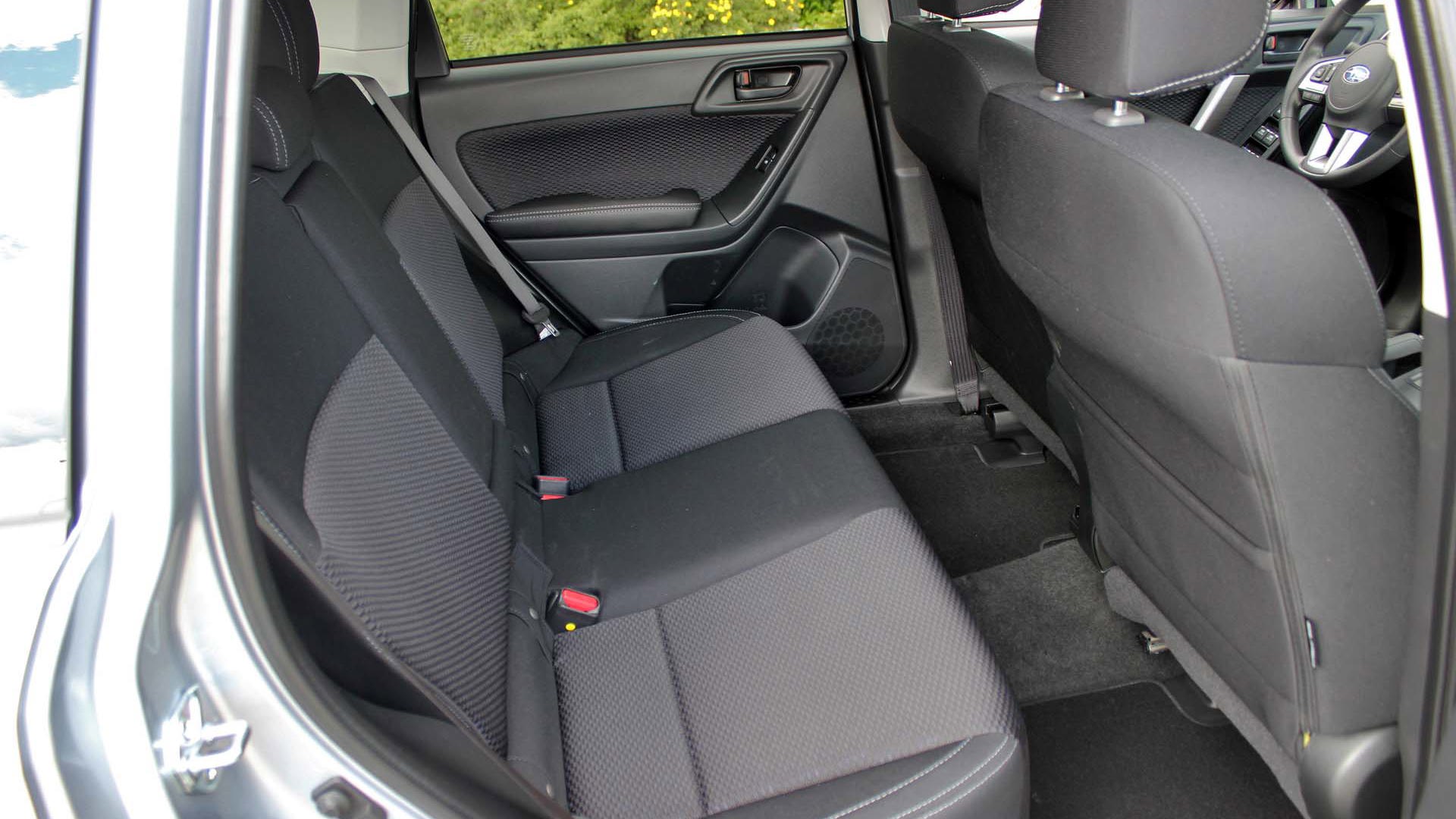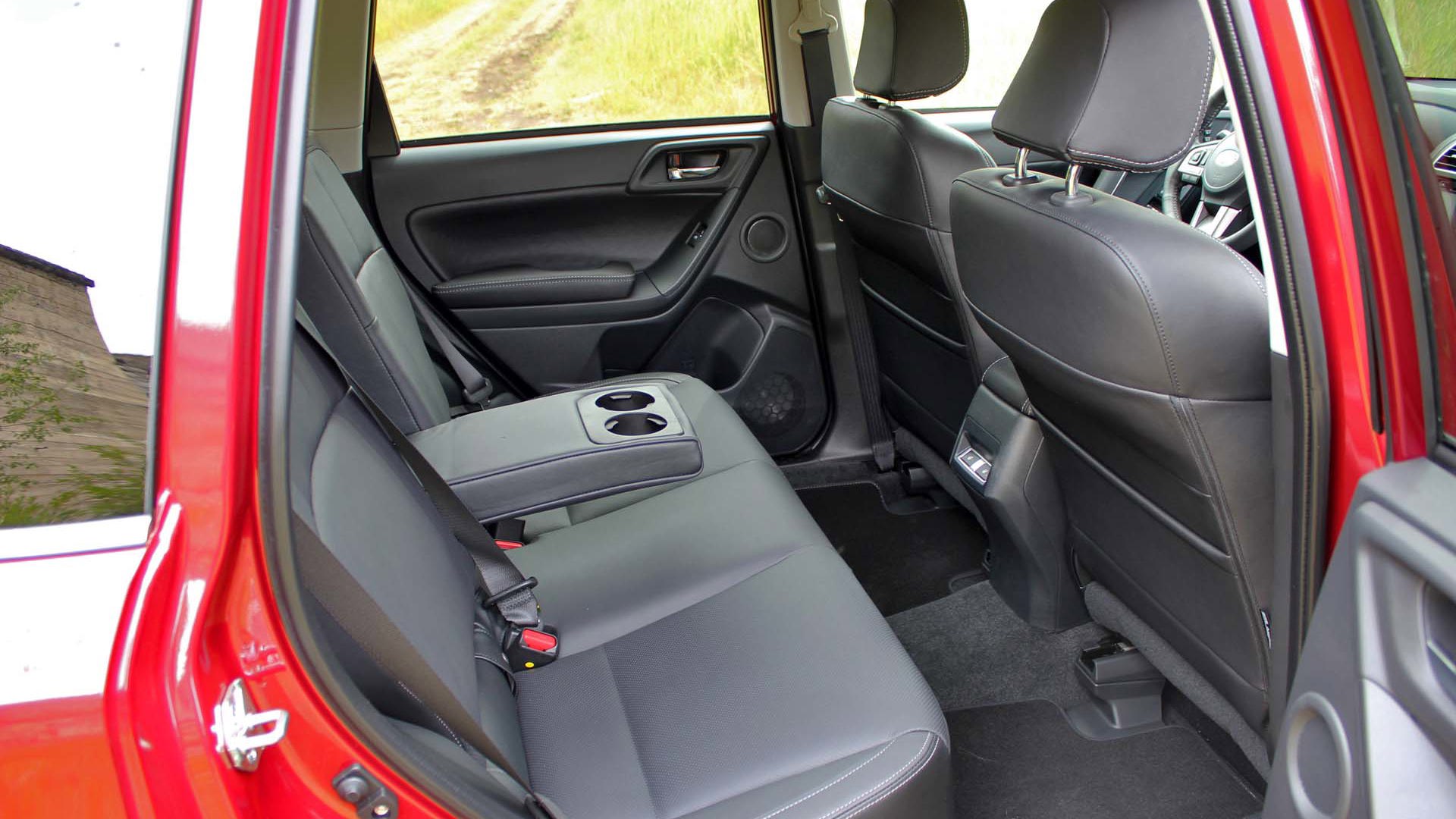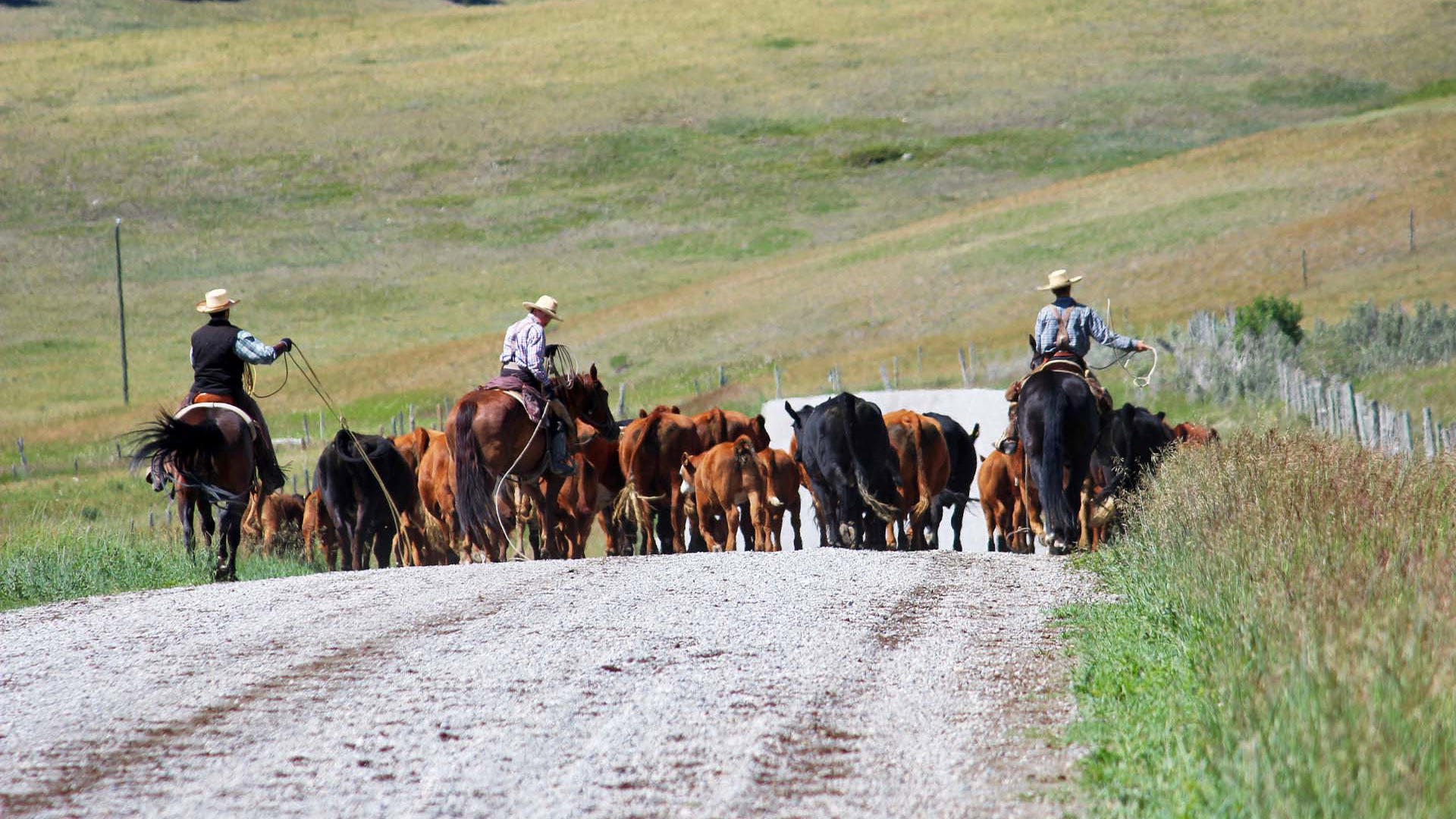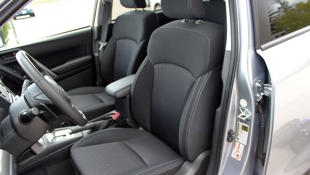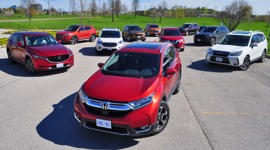You have to hand it to High River, AB. While they’re not the first place to be hit hard by Mother Nature’s wrath in the form of heavy flooding, the way which they’ve gone about rebuilding their town in just 3.5 short years since the nearby Highwood River burst its banks in June of 2013 is fantastic.
This is a vehicle about peace of mind, about helping you tackle the travails of life.
Unless you look really closely at some of the shops – Stan Groff Saddelry, for instance, has a high water mark on the base of its counter tops, just to remember just how under it the town was – you would never know it had been hit so hard. All 13,000 citizens had to be evacuated back then; today after the help of almost 200,000 volunteers ranging from Canadian Forces personnel to local residents and out-of-towners, 12,920 have returned. That’s a remarkable feat of perseverance and the human spirit.
So, why are we here talking about small town Canada, but looking at pictures of an all-new Subaru crossover? Well…
You’ll often see the words “built for all life’s rallies” peppered throughout Subaru’s media. Indeed, that plays off the fact that much of Subaru’s brand identity came from the success it’s had on the World Rally Championship stages. That works well from the perspective of a performance vehicle like the WRX or WRX STi, but taken in the context of the rugged Forester, it’s more about showing how that car can get you through the trials and tribulations of everyday life. Making it easier to see over traffic in gridlock, for example. Or able to haul you and your family’s camping gear. Or able to make the trip to said campsite without worrying about having to tackle a gravel road or two. This is a vehicle about peace of mind, about helping you tackle the travails of life. Which is something that I’m sure High River can relate to, even though theirs was a trial that very few Forester owners will ever have to go through.
At any rate, 2017 marks a facelift for the Forester, albeit a minor one. There are new LED DRLs (that are steering-adaptable, meaning when you turn, so do they) and LED taillights available on Limited trims and up, as well as a selection of new wheels that are both handsome and functional, in that they help to reduce drag and improve fuel economy. That has gone down from 9.6L/100 km in the city to 9.2, and from 7.5 on the highway to 7.4 when equipped with the CVT. All Foresters – whether equipped with the 2.0L turbo motor or the 2.5L naturally-aspirated four – now get Partial Low Emissions Vehicle (PZEV) rating, which once again plays into that peace of mind.
Starting at $25,995 for the base 2.5i trim with a six-speed manual transmission (the Forester is the only vehicle in the segment, meanwhile, that gets AWD and a manual), the Forester climbs up through 8 more trims: 2.5i Convenience ($29,195), 2.5i Touring ($30,495, or $31,795 with an auto), 2.5i Touring with Tech package ($33,295) 2.5i Limited ($35,795), 2,5 Limited with Tech package ($37,295), 2.0XT Touring (turbo motor, $33,995), 2.5XT Limited ($37,995) and 2.0 XT Limited with Tech package ($39,495).
The Tech package we’re talking about provides the Subaru EyeSight safety suite, which adds pre-collision braking, pre-collision brake assist, adaptive cruise control, lane departure warning, lane sway warning, lead vehicle start alert and lane keep assist.
2017 also marks the first time we’ve seen what Subaru’s calling “EyeSight in reverse”; that is to say an electronic back-up aid. If you’re reversing at anywhere between 1.5 and 8 km/h, the brakes will stop you fully if they sense an object coming up on your rear. Between 8 and 15 km/h, it won’t stop you fully, but it will slow you down enough to snap you to attention and have you hit the brakes to finish the job. The screen mounted in the dash’s second tier, meanwhile, displays a handy meter to show just how close you’re coming to any object behind you. Yes, there’s also a back-up cam – it’s standard on all trims – but like other types of this tech, it’s a bit of a fish-eye lens which can make it difficult to determine just how far behind you an object may be. The meter, then, provides a nice helping hand.
We’d eventually experience the tech on our own, but Subaru lined up a handy demonstration for us in the new Bob Snodgrass Recreation Centre. It’s so named after the mayor of High River, and the mayor himself was on-hand to help present the Forester.
There, Subaru parked a child-sized, training wheel-equipped bike right there on the dried-out arena floor. They proceeded to try and back into it, but the system cut them off. It was impressive considering the bike barely cleared the height of the bumper. It was a foreshadowing, however, of a slight problem we’d encounter later on.
Inside, one of the nicest additions for 2017 is a new leather colour called Cognac Brown – I know, “Cognac” and “Forester” may not be the first two words to roll off the tongue, but bear with me a minute. It looks absolutely fantastic, and I see no reason why a vehicle that’s meant to be a road trip chariot isn’t allowed to spice things up a little inside. I’m a huge fan of brown interiors, and the way the material covers the seats and is nicely sprinkled on the dash and doors is just right. It’s not overwhelming, but there’s enough of it that it catches the eye.
Also new is a TFT colour display nestled between the gauges on Limited and Touring trims. It displays your trip computer, cruise settings, fuel and more, and looks properly modern while doing so. Other trims get a digital display there, too, but it’s night and day in comparison. That screen completes a trifecta of in-dash displays: the aforementioned second-tier display, the in-gauge item and more traditional centre stack insert, which measures either 6.2” or 7” depending on your trim. There’s no shortage of displayed info, that’s for sure.
If you select the Tech package, there’s also no shortage of driving aids; we mentioned all that’s included before, so I won’t re-has that. What’s really interesting, however, is Subaru’s proprietary Subaru Rear Vehicle Direction (SRVD) tech. Technically, it’s a blind spot notification system, but with a twist. Instead of just of focusing on the joker who’s there chilling in your blind spot instead of passing you, SRVD will actually notify when it senses an approaching vehicle. That way, vehicles that are soon to arrive in what would be a blind spot one lane over are also detected. If said vehicle is moving quickly, SRVD could be a lifesaver.
Along with the tech, you’ll find a few additions to the fit n’ finish sphere, too. A heated steering wheel comes to a Subaru for the first time, and Limited models get heated rear seats, too. While it may not make the lion’s share of sales, it’s clear that Subaru is taking the luxury aspect of the Limited trims very seriously.
What all trims get – and has been a Forester staple for quite some time, now – is a fantastic view out thanks to a tall roof and big greenhouse, which is great for smaller and taller drivers alike. Taller drivers like the headroom (that’s 1,052/1,015 mm with/without sunroof up front, and 952 mm in the back), smaller drivers like the ability to see 360 degrees around them without having to crane their necks and backs too much.
Cargo-wise, while the Forester’s 972 L of cargo room with the seats up is middling amongst the competition, the 2,115 L you get once you fold the seats flat is the most you’ll find in the segment. Standard roof rails come in black for your 2.5-spec Forester, and silver for XT models. The 30-39 age group – one of the Forester’s largest buying groups – should have no problem hauling their canoes, camping gear or ski stuff.
They – and any other Forester buyer – should also have no problem reaching said camping ground or ski resort.
For as long as I’m sure many of us can remember, Subaru has traded on its penchant for developing fantastic AWD systems. In that light, while the Forester may not quite have the capabilities of, say, a Jeep Wrangler or even a Cherokee Trailhawk, what we found was that it will likely be able to take anything that 90% of its buyers throw at it in stride. More on that in a minute, though.
First, we have to take a look at what it’s like on more hospitable roads than those surrounding Alberta’s Rocky Mountains we’d soon be traipsing through.
Upon start-up, the first thing that draws your attention is just how quiet the whole affair is. The telltale off-beat Boxer warble exists, but you really have to strain your ears to hear it, which is not something we’re used to when it comes to the Forester. Then, once up and running on the highway, all sorts of additions have been made to quiet things down. The floorboards, doors, cargo bay floor and more have all been given more sound deadening material, while thicker glass has been added to the windshield and side glass to help reduce wind noise. This is not only one of the quietest Foresters you’ll experience; it’s one of the quietest Subarus in general.
That, of course, makes it all that much easier to experience the very good Harman Kardon 8-speaker system which comes as standard on Limited models. Four- or six-speaker systems appear on lower trims.
While steering input is not as important on the highway as it is on the back roads, it pays to remember when cruising that the steering ratio has been increased for this generation, meaning smaller adjustments mean more responsiveness than previous; take care when changing lanes, and you should be fine.
Power for the 2.5i is rated at 170 hp and 174 lb-ft of torque, figures than balloon to 250 and 258, respectively, for turbocharged XT models. Like the cargo figure, the power figures put the 2.5 right in the middle of the competition (the CR-V makes more; the Tucson, less), but opt for the turbo motor, and the Forester blows most of the competition out of the water.
While I wouldn’t say the power figures left me wanting, necessarily, there were a few passing manoeuvres that took a little longer than I thought they would, considering that our load of two adults with one day’s worth of carry-on luggage each isn’t that taxing of a payload. It was only in extreme, full-throttle instances or when climbing steep grades that it’s ever really a problem, however. Further, we only got to experience the CVT, which is never going to be quite as responsive when it comes to full-throttle acceleration. There’s a manual option for that. If you’re just cruising, then the quiet atmosphere and well-appointed and spacious interior is right on point.
About the CVT: while it does provide for some linear acceleration, Subaru has programmed in some virtual shift points – CVTs don’t actually swap cogs, remember – because they affirm that Subaru buyers often like to feel the car shift. That’s great; trouble is, we found it a little overly shuddery in a few instances, which was a little surprising.
Less surprising was just how good the Forester was once we took it off off the beaten track. Loose rock, fast gravel, mud, grassy field, steep inclines, steep declines – this thing did it all, and did it all with a kind of panache that only a seasoned AWD vet could do. Through all of this, the one time – the ONE time – I felt any kind of hesitation in the traction department was when climbing a steep-ish grade on a surface that was loose gravel at the best of of times, and tire-shredding shale at the worst of times, left there after a massive rock slide buried half the town of Frank, AB in 1905. Even then, the front left wheel slipped, and quickly had its power taken away by the smart AWD system and sent to the left wheel, which helped pull us out of the mess. Incredible.
That area, along with a steep, grassy field in Albertan ranchland later on also gave us a chance to put Subaru’s X-Mode to the test.
In addition to making the traction control and torque shifting even more sensitive to slip, X-Mode – activated by a press of a button on the centre console -- also adds a hill-descent control system. Activate it, and as you descend a hill, let the drivetrain and brakes handle the power delivery, while you concentrate on steering. It takes a bit of getting used to as the slowdown is a little abrupt, but let it do its thing, and you’ll wonder how you ever got on without it.
In normal driving, meanwhile, power is divided 60:40 front:rear on auto cars, and 50:50 on cars equipped with a manual transmission. Once slippage occurs, power can be distributed to the axle that needs it. Each wheel, meanwhile, can get 100% of available torque, too, which is what we were feeling on that climb.
It’s funny; the only real issue I can remember during that drive wasn’t mechanical at all; it had to do with the electronics and that backwards EyeSight thingy I was talking about. It happened when my drive partner was trying to position the car for a photo near some tall grass. This was grass that the Forester and its 220 mm of ground clearance would have no trouble foraging through. The system, however, would have none of it, and so what should have taken one or two moves, took more. It’s great that it won’t run over my kid’s bike, but some easily bendable grass in a field? Really?
That’s nit-picky, though, and somewhat trivial compared to how much the Forester gets right. It’s quiet, it’s comfortable, well-equipped and when it comes to needing that extra oomph on snowy drives or weekends in the country, well, you know the Forester’s got you covered. A little more power from the base engine wouldn’t go unnoticed, and the looks may not be for everybody but then again, when it comes time for a car that can really take you on all of life’s rallies, well, the latest Forester works as advertised and should have no problem continuing on as the brand’s best seller in Canada.








